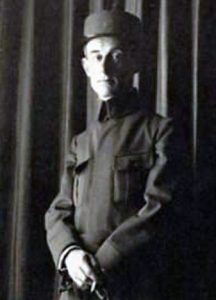Ravel Sonata for Violin and Cello (1920—22)
Loeffler Two Rhapsodies for Viola, Oboe, and Piano (1901)
Chausson Concert for Violin, Piano and String Quartet, Op. 21 (1889-91)
I believe only in French culture, and regard everything else in Europe that calls itself “culture” as a misunderstanding. I do not even take the German kind into consideration.
Ecce Homo, Friedrich Nietzsche, 1888
It might prove dangerous for French composers systematically to ignore the output of their foreign colleagues, and thus to form a sort of nationalistic group. Our musical art, so rich at the present time, would not be long in degenerating, and immuring itself in commonplace formulas.
Maurice Ravel declining an invitation from the National League for the Defense of French Music, June 1916
BCMS Season 36 began with an invitation to share our most intimate thoughts and feelings in our music making: from the deep spirituality of Bruckner and Messiaen to the boundless imaginary pursuits of Janáček and Blues from Harbison.

For our season finale we get even more personal, in music organized around the possibilities of pairings—in conversation, imitation, agreement, support, reaction—that are each at the heart of how chamber music works. The Ravel Sonata (1920–22), using two players, embodies all these possibilities. Dedicated to two wind players from the BSO, Loeffler’s Rhapsodies (1901) were reworkings of songs for voice, clarinet, viola and piano set to two decadent poems by Maurice Rollinat. Those settings evolved into the instrumental version with viola and oboe as protagonists introduced by the piano. Chausson’s Concert (1889-91) is effectively a “super” sonata for violin and piano with a string quartet as backup!
Taken together the three instrumental works reflect intellectual trends in France among literary, visual and musical artists from the time of Massenet and Franck through Wagner (who was everywhere) to Debussy and Ravel, who incorporated elements of jazz in the 1920s.
One of the nicest lessons to learn on the journey of preparing this concert comes from the composer who was willing to resist a nationalistic trend of his own time that would erect boundaries around what art was and what should be included or excluded. He regarded the other.
As we bid farewell to season 36 we offer our thanks and appreciation to all who have made possible our concerts: to you our audience and fellow members, our contributors, our musicians, our Board and BCMS Foundation, and our hardworking staff.
Enjoy. See you in the fall.
MT
